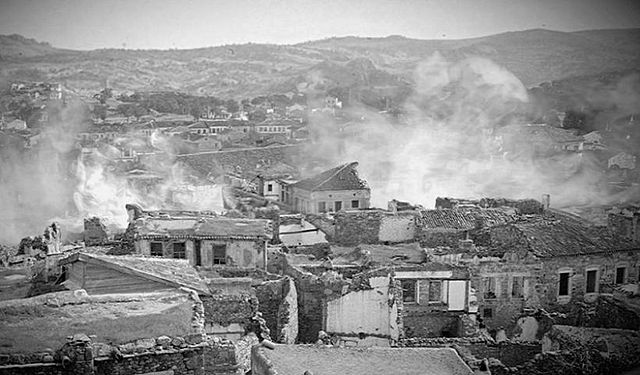The Greek genocide, which included the Pontic genocide, was the systematic killing of the Christian Ottoman Greek population of Anatolia which was carried out mainly during World War I and its aftermath (1914–1922) on the basis of their religion and ethnicity. It was perpetrated by the government of the Ottoman Empire led by the Three Pashas and by the Government of the Grand National Assembly led by Mustafa Kemal Atatürk, against the indigenous Greek population of the Empire. The genocide included massacres, forced deportations involving death marches through the Syrian Desert, expulsions, summary executions, and the destruction of Eastern Orthodox cultural, historical, and religious monuments. Several hundred thousand Ottoman Greeks died during this period. Most of the refugees and survivors fled to Greece. Some, especially those in Eastern provinces, took refuge in the neighbouring Russian Empire.
Greek civilians mourn their dead relatives, Great Fire of Smyrna, 1922
Phocaea in flames, during the massacre perpetrated by Turkish irregulars in June 1914
Hellenism in Near East during and after World War I, showing some of the areas (Western Anatolia and Eastern Thrace) where the Greek population was concentrated. The Pontic region is not shown.
"Turks Slaughter Christian Greeks", Lincoln Daily Star, 19 October 1917
The Pontic Greek genocide, or the Pontic genocide, was the deliberate and systematic destruction of the indigenous Greek community in the Pontus region in the Ottoman Empire during World War I and its aftermath.
A temporary pavilion in Syntagma Square, Athens, commemorating the Pontic genocide
Massacred Greeks in Giresun region, 1921
1924 statute of the Athens-based Brotherhood of the Fighters for Pontus







